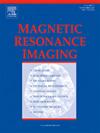Cerebral white matter changes and their correlation with cognitive dysfunction and clinical indicators in patients with early coal workers' pneumoconiosis based on MR-diffusion spectrum imaging
IF 2
4区 医学
Q2 RADIOLOGY, NUCLEAR MEDICINE & MEDICAL IMAGING
引用次数: 0
Abstract
Objective
This study aimed to investigate alterations in brain structural networks in early-stage coal workers' pneumoconiosis (CWP) using MR-diffusion spectrum imaging (DSI) and explore their correlations with clinical indicators and cognitive functions.
Materials and methods
A total of 40 early CWP patients and 27 healthy controls were included. Based on cognitive scale scores, CWP patients were divided into two groups: those with cognitive impairment (CWP-CI) and those without (CWP-nonCI). DSI scans were performed to construct brain structural networks, and graph theory was applied to compare topological properties among the three groups. Correlations between abnormal network properties, clinical indicators, and cognitive scores in the CWP-CI group were analyzed.
Results
Compared to the CWP-nonCI group, the CWP-CI group exhibited reduced functional connectivity in regions such as the right orbitofrontal middle gyrus, right medial superior frontal gyrus, right posterior cingulate gyrus, and right fusiform gyrus. Global efficiency (Eglob) decreased, while shortest path length (Lp), small-world attribute (σ), and standardized clustering coefficient (γ) increased. In the right amygdala and left dorsolateral superior frontal gyrus, degree centrality (DC) and node efficiency (Ne) decreased, while node shortest path length (NLp) increased. Correlation analysis revealed that Eglob was negatively correlated with working years (r = −0.561, P = 0.015), BC values in the right amygdala were positively correlated with MMSE scores (r = 0.503, P = 0.034), and NLp in the left dorsolateral superior frontal gyrus was negatively correlated with FVC (r = −0.681, P = 0.002).
Conclusion
Early CWP patients exhibit disrupted brain structural networks, with network properties correlating with clinical indicators and cognitive scores. These findings suggest that structural network changes contribute to cognitive deficits in CWP patients and are associated with disease progression.
早期煤工尘肺患者脑白质变化及其与认知功能障碍及临床指标的相关性
目的:利用核磁共振扩散谱成像(DSI)研究早期煤矿工人尘肺(CWP)脑结构网络的变化,并探讨其与临床指标和认知功能的相关性。材料与方法:共纳入40例早期CWP患者和27例健康对照。根据认知量表评分,将CWP患者分为两组:认知障碍组(CWP- ci)和无认知障碍组(CWP- nonci)。DSI扫描构建脑结构网络,并应用图论比较三组的拓扑特性。分析CWP-CI组异常网络特性与临床指标、认知评分之间的相关性。结果:与cwp -非ci组相比,CWP-CI组右侧眶额中回、右侧内侧额上回、右侧扣带回后回和右侧梭状回等区域的功能连通性降低。全局效率(Eglob)降低,最短路径长度(Lp)、小世界属性(σ)和标准化聚类系数(γ)增加。在右侧杏仁核和左侧背外侧额上回,度中心性(DC)和节点效率(Ne)降低,而节点最短路径长度(NLp)增加。相关分析显示,Eglob与工作时间负相关(r = -0.561,P = 0.015),公元前价值观正确的杏仁核与MMSE评分呈正相关(r = 0.503,P = 0.034),和NLp在左背外侧额上回和FVC负相关(r = -0.681,P = 0.002)。结论:早期CWP患者表现为脑结构网络紊乱,其网络特性与临床指标和认知评分相关。这些研究结果表明,结构网络改变有助于CWP患者的认知缺陷,并与疾病进展有关。
本文章由计算机程序翻译,如有差异,请以英文原文为准。
求助全文
约1分钟内获得全文
求助全文
来源期刊

Magnetic resonance imaging
医学-核医学
CiteScore
4.70
自引率
4.00%
发文量
194
审稿时长
83 days
期刊介绍:
Magnetic Resonance Imaging (MRI) is the first international multidisciplinary journal encompassing physical, life, and clinical science investigations as they relate to the development and use of magnetic resonance imaging. MRI is dedicated to both basic research, technological innovation and applications, providing a single forum for communication among radiologists, physicists, chemists, biochemists, biologists, engineers, internists, pathologists, physiologists, computer scientists, and mathematicians.
 求助内容:
求助内容: 应助结果提醒方式:
应助结果提醒方式:


